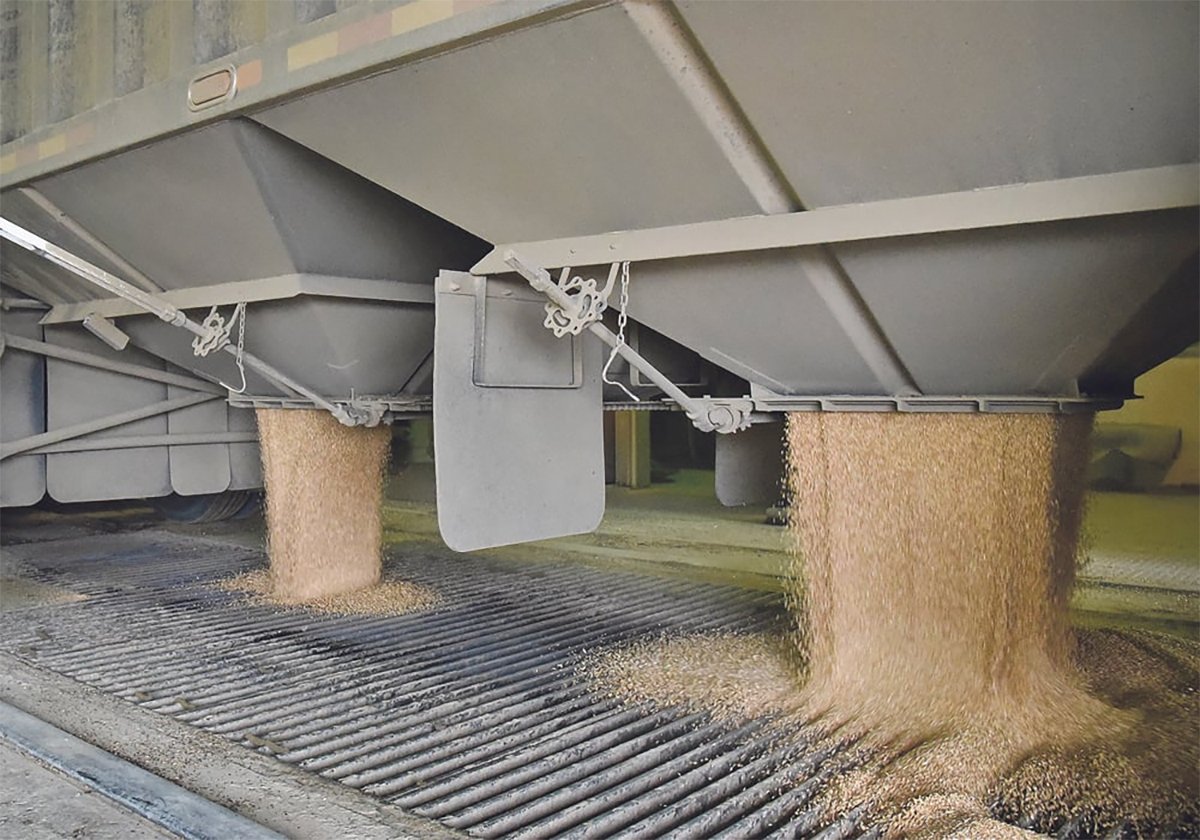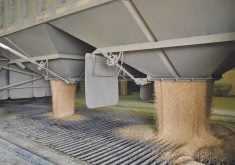Quebec permits
Barry Wilson’s article, “CWB permits not needed in Quebec”, (WP, March
21) reveals that Quebec organic farmers can export without a licence.
Why?
The licensing Part IV of the Canadian Wheat Board Act applies to all of
Canada, including Quebec, and states that all exporters must have a
licence. By overlooking compliance in the east, the CWB is not applying
Part IV equally throughout Canada.
The CWB also choose to favour the east when they grant licences on
Read Also

Worrisome drop in grain prices
Prices had been softening for most of the previous month, but heading into the Labour Day long weekend, the price drops were startling.
demand to eastern producers, allowing them to sell directly to buyers.
On the other hand, prairie producers, including organic farmers, are
unconditionally denied licences, leaving us with no choice but to sell
to the CWB. Buy-backs are no relief from being forced to sell to the
Board.
Remarkably, this repression of prairie farmers is not mandated by the
legislation. Rather, it is an arbitrary decision of self-serving CWB
bureaucrats.
We need to elect directors to the CWB who will put the interests of
farmers first, and stop this non-legislated discrimination.
– John Husband,
Wawota, Sask.
The ‘A’ word
Will someone please explain the discrepancies in decisions being taken
(or not being taken) in rural Saskatchewan regarding local government
amalgamation/reorganization?
We hear incessantly of health district number reduction, amalgamation
of education districts. At the recent Saskatchewan Association of Rural
Municipalities convention the “A” word, amalgamation, was seldom
mentioned. While there may be efforts behind the scenes to amalgamate
rural municipalities, the number the last time we looked is still 297
plus hundreds – yes hundreds – of village and town councils, the same
as it has been for decades. Why the discrepancy of effort?
With a theoretical potential to influence outcomes, municipal
government has seen the least change or effort to adapt to the 21st
century. Given the present structure (or lack thereof) of local
government, it is unlikely that structure will ever have significant
influence on outcomes in rural Saskatchewan.
Other provinces are at least trying the amalgamation route. Decisions
regarding roads, water and sewage infrastructure, telephones,
irrigation development, power supply will be made but without local
government with this province’s system. The problems continue to
require broader perspectives, solutions and approaches rather than
those appropriate for a century ago.
There may be some people considering the seriousness of the rural
Saskatchewan problem. A hope could be that the new executive of the
SARM will step forward and attempt to deal with the future.
– Bob Middleton,
Saskatoon, Sask.
Accurate vision?
I would like to respond to Sean Pratt’s article in the March 21 paper
labelled “Sask. population stuck in a rut”. Who is the Saskatchewan
Agrivision Corp Inc. and its officers? Never heard of them and I
suspect they are either funded by the provincial government or part of
it.
I have seen other projected population figures from many sources and
none, yes none, agree with this hog swill.
Is this another Prozac moment promoted by those who will not deal with
reality? Yes, Saskatchewan may revive, but not with the present
economic climate that we have. When one views the 36 percent drop in
farm population over the last two years in the West, along with the 26
percent decline in agri-food related jobs in the same period, where is
this agency getting its facts?
We all hope for a brighter future but will these people quit painting a
picture that does not give a true reflection to Ottawa what’s going on?
This has been our problem for the last 10 years, is groups such as this
tell a great story that has no merit. As a result Ottawa says, “Great.
I thought there was a problem but I guess we were wrong.”
Al Scholz, I would like to see how you came up with this. I would like
to see your resource material. I would like you to prove wrong federal
statistics.
I would like you to prove how value added will come when the pasta
plants have fought nothing but an uphill battle with government bodies.
Ethanol plants are great but they too are fighting a battle with
government. Everyone wants a part of it before it gets started and as a
result, kill it.
The people deserve to hear great news that is accurate. They need to
hear positive direction by government with positive programs to instill
growth. They need to have government listen and act on their needs and
until that happens, Mr. Scholz’s prediction will not come true.
– Bob Thomas,
Ottawa Trek Committee,
Milestone, Sask.
Big board
There is a great deal of controversy on the issue of who actually runs
the Canadian Wheat Board – the board of directors or the federal
government.
The 2001 Public Accounts of Canada states, “there is also a number of
self-sustaining government business enterprises that are not considered
crown corporations within the meaning of the Financial Administration
Act, but which are owned or controlled by the government and are
ultimately accountable to Parliament through a minister of the crown
for the conduct of their affairs. These are referred to as ‘other
government business enterprises’ and include the Canadian Wheat Board
and the various Port Authorities”. …
This sounds to me like the government plays a bigger role in the CWB
than most people think.
Another question is why did the CWB require 17 senior management
positions in 2000 to run the board in conjunction with the board of
directors, when in 1996 it took only 12 senior management positions to
do the job on their own?
If the board of directors had any real say in the running of the CWB,
the board should be able to run the corporation with less senior
management, not more.
I would like to point out that the salaries paid to the senior
management run from $90,000 to $250,000 per year with benefits on top
of that. In the year 2000 this amounted to $3.5 million.
These are questions everyone should be asking their directors.
– Lynda Swanson,
Elnora, Alta.














